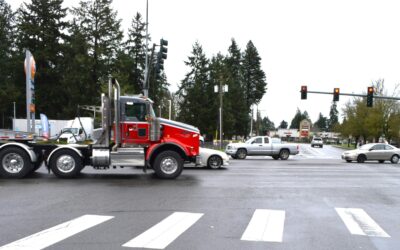When the clocks fall back, evening commutes in Georgia suddenly happen in darkness. The first two weeks after the time change consistently bring more rear-end collisions, left-turn crashes, and pedestrian strikes as drivers adjust to earlier sunsets and disrupted sleep. If you are hurt in a wreck during this transition, understanding how Georgia fault rules work—and how to document your injuries—can protect your health and your personal injury claim.
The danger isn’t just darker roads. The time shift can cause drowsiness, slower reaction times, and reduced alertness—especially for people working late shifts, parents juggling school pickups, and commercial drivers on tight schedules. Glare at low sun angles, headlights reflecting off wet pavement, and increased pedestrian traffic around after-school activities combine to create high-risk conditions. Even at “city speeds,” these crashes can cause concussions, whiplash, shoulder and knee injuries, and long-term soft-tissue damage.
Georgia is a fault state, which means the negligent driver’s insurer is responsible for your damages. Drivers have a legal duty to operate safely for conditions: slowing down in darkness or rain, increasing following distance, using headlights, and staying off the phone. When a motorist fails to yield at a crosswalk, speeds through a yellow, or drifts while drowsy or distracted, they can be liable for the harm that follows. If a crash involves a company vehicle, the employer may also be responsible under Georgia law.
If a collision happens during the time-change period, prioritize safety and build your proof early. The steps you take in the first 24–48 hours often determine whether the insurer accepts responsibility or tries to blame “the time change.”
What to do after a post-time-change crash
- Call 911 and get a medical evaluation. Concussion and neck/back symptoms often appear hours later; early records link injuries to the crash.
- Document the scene. Photograph vehicle positions, damage, skid paths, traffic signals, crosswalks, lighting conditions, and any road glare or standing water.
- Identify witnesses and cameras. Get names for bystanders; ask nearby businesses and residences to preserve doorbell or CCTV footage. Save your dash-cam files.
- Request the police report number. Ask officers to note visibility, headlight use, and suspected distraction or impairment.
- Track your treatment. Follow doctor recommendations, attend therapy, and keep receipts and mileage—consistent care supports your Georgia injury claim.
- Avoid recorded statements and quick offers. Speak with an attorney before guessing about speed or fault to an insurer.
Common injuries after evening-rush collisions include whiplash and herniated discs, concussions and post-concussive symptoms (headaches, light sensitivity, brain fog), shoulder and knee injuries from bracing, and fractures. Beyond ER visits, many people require imaging, physical therapy, injections or surgery, and time off work or school. You may also need to replace child car seats, prescription glasses, laptops, phones, and other items damaged in the wreck.
Insurance coverage can be layered. The at-fault driver’s liability policy is primary. Your medical payments (MedPay) coverage may help with immediate bills regardless of fault. Uninsured/underinsured motorist (UM/UIM) coverage can be crucial if the other driver has limited insurance or flees after a hit-and-run. In commercial crashes, additional corporate policies may apply. Identifying every available policy—and preserving evidence of darkness, glare, and driver fatigue—can significantly increase total recovery.
Pedestrians and cyclists face higher risk right after the time change, too. Drivers who are used to daylight during pickup hours may fail to see crosswalks, school zones, or riders in bike lanes. If you are struck while walking or biking, the same rules apply: seek immediate medical care, photograph the scene and lighting, keep your damaged shoes, clothing, helmet, and gear, and request nearby video before it is overwritten.
Some collisions are made worse by poorly maintained road lighting, malfunctioning signals, or construction detours with confusing signage. In limited situations, contractors or property owners near the roadway may share responsibility for a foreseeable hazard. Sorting out multiple parties quickly—driver, employer, contractor—requires careful investigation by an experienced Atlanta car accident lawyer.
Gunn Law Group moves fast during the time-change window to secure camera footage, obtain 911 audio and crash data, document lighting and weather at the exact time of impact, and coordinate with your medical providers to show how the collision changed your life. We calculate the full value of your losses—medical care now and in the future, lost wages or reduced earning capacity, pain and suffering, and property damage—and we negotiate with every responsible insurer to pursue the maximum compensation Georgia law allows.
If the fall time change turned your evening commute into a collision, don’t let an insurance company chalk it up to “just bad visibility.” Need a home run? Call the Big Gunn at 888-BIG-GUNN for a free case review with an Atlanta personal injury lawyer who knows how to win time-change crash claims.




